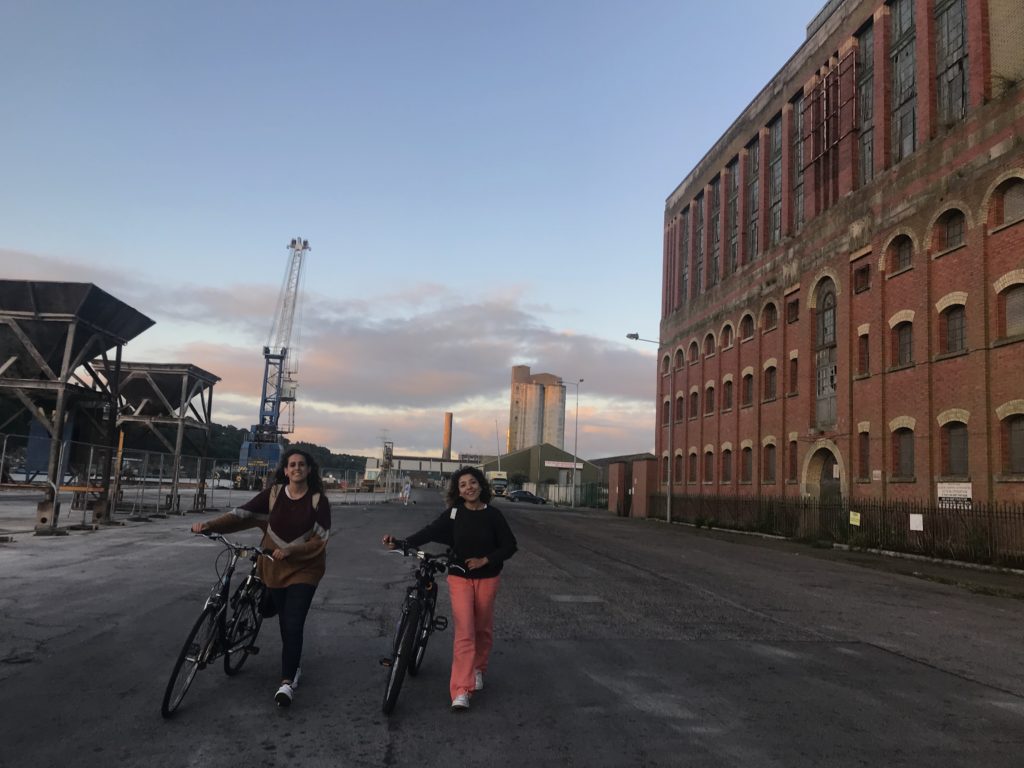Transitioning city spaces
The world’s second largest natural harbour is located at the southernmost tip of Ireland. Travel 25 km upstream and you will arrive at the small city of Cork. An amalgamation of Ireland’s unindustrialized past and the cosmopolitan present, crumbling plasterwork and 17th century cathedrals seem right at home beside the sleek urban glass facades lining the marina. It is the European foothold and an intellectual hub for some of the world’s largest tech firms (Pfizer, Eli Lilly and Apple all operate out of Cork), but for its 125,000 residents, Cork is fondly considered the true capital of Ireland. It has been recognized as a European City of Culture, with deep roots and a long history.
Cork’s many transitions, from rural to urban, local to increasingly international, and old to modern are strongly evident at street level. The wet weather blown in off the northern Atlantic means that winter flooding of the bustling city centre is an expected phenomenon and that wind turbines cluster along the south and west periphery of the county. The city’s decarbonization plans are ambitious, and under the guidance of Cork Chamber and Cork City Council, are an interesting case of the urban energy transition in a small but buzzing European business centre.

River Lee. Credit: Julia le Maître
A strong plan for climate action
Cork City Council and Cork County Council are together responsible for the actions undertaken in the city. Cork City Council declared a climate emergency in 2019, establishing a Climate Action Committee to serve as a watchdog across all other activities carried out by the municipality, alongside specialized initiatives on climate and biodiversity remediation. The Committee’s autonomy allows it to steer decision-making on the restoration of native species along the city’s many green belts as well as to monitor the progressive climate targets held within the city’s Climate Action Plan, such as the target to increase the Council’s energy efficiency by 50% until 2030.
One example of a project to curb emissions is the expansion of public transport services to alleviate reliance on private vehicles. Though pandemic-related disruption has slowed progress by limiting bus capacities, the reallocation of roads for public transport services, expansion of cycle paths and support for numerous new pick up/drop off points for the city’s bicycle rental project continues.
Public engagement and knowledge sharing
Cork is exploring avenues towards becoming a sustainable and healthy city. Think-tanks and collaboration fora such as Cork Healthy Cities frequently host public events to promote sustainable initiatives. These include circularity drives and applying ‘doughnut economics’ thinking to benchmark Cork’s impacts with respect to planetary boundaries and social and climate justice.
County Cork is Ireland’s largest producer of dairy and meat products, which means that there is a delicate interaction between the social and climate justice challenges, as is often described for New Zealand, another agriculture-dependent economy. The Green Party’s education drive to address climate adaptation and mitigation highlights the impacts of consuming meat, both from a climate and health perspective.

A dairy farm in Cork. Credit: Julia le Maître
University College Cork (UCC) is a prominent presence, at the centre of much of the international and research activities that ripple outwards from the city. In the Times Higher Education rankings 2021, UCC placed eighth globally for its performance against the United Nations’ Sustainable Development Goals. There is close interconnection between research groups at the Marine and Environmental Research Institutes, the Sustainable Energy Authority of Ireland (SEAI) and the private sector on projects such as biofuels generation, wind energy expansion and acceptance, sustainable aquaculture and agricultural monitoring.

University College Cork. Credit: Julia le Maître
Energy efficiency and community participation
All 34 local authorities in Ireland have signed a Climate Action Charter committing to a 50% improvement in energy efficiency by 2030. Though much of the city remains poorly energy efficient, with Building Energy Rating (BER) generally C or lower (on a scale of A–G), the city is involved in policing the combustion of peat and other carbon-intensive fuels while encouraging households to take up SEAI grants to install heat pumps.

Decision-making for new initiatives is informed by community consultation and public engagement, bolstered by the strong presence of Sustainable Energy Community and Tidy Towns representatives from Cork City and surrounds. Generally, it is felt that the EU stance on climate and the success of the Greens in the 2020 national election, which produced a coalition government, has played a role in strengthening efforts to address climate and energy transition challenges in the city. Groups such as Cork Environmental Forum and Stop Climate Chaos are examples of affiliates involved on a non-member basis with tackling the delivery of ambitions set by the Green Party.
Seeking to thrive
Cork is a hotbed of culture year-round, with new seating and outdoors facilities in the wake of the COVID-19 pandemic allowing residents to explore the city from a new perspective. Given its abundant natural resources and close relationships with local communities, research groups and the private sector, Cork’s energy transition and action on climate change will feature centrally in Ireland’s national efforts to deliver on its commitment to reach 70% renewable electricity share by 2030.
About the author
Julia le Maître lives in Cork City and participated in the mPOWER Digital course of May 2021. When she’s not out for a gusty Atlantic stroll along the River Lee, she is based out of University College Cork as a Marie Skłodowska-Curie early stage researcher with a primary focus on the social acceptance of renewable energy. In exploring how community participation in the energy transition can be further developed, her work looks at community engagement, co-investment and enhancing current best practices around community benefits schemes from wind projects.
Title Image Credit: Julia le Maître
